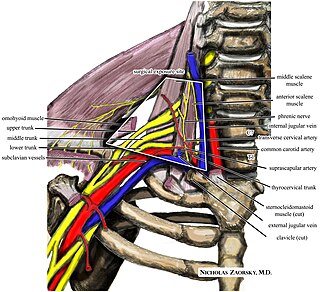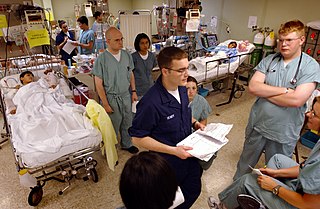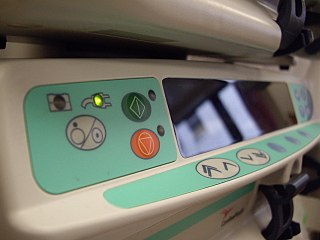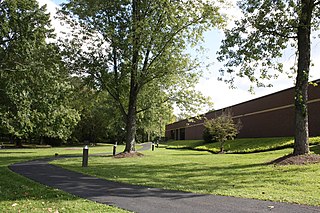Related Research Articles

Medical psychology, or Medicopsychology, is the application of psychological principles to the practice of medicine, primarily drug-oriented, for both physical and mental disorders.
Clinical governance is a systematic approach to maintaining and improving the quality of patient care within the National Health Service (NHS). Clinical governance became important in health care after the Bristol heart scandal in 1995, during which an anaesthetist, Dr Stephen Bolsin, exposed the high mortality rate for paediatric cardiac surgery at the Bristol Royal Infirmary. It was originally elaborated within the United Kingdom National Health Service (NHS), and its most widely cited formal definition describes it as:
A framework through which NHS organisations are accountable for continually improving the quality of their services and safeguarding high standards of care by creating an environment in which excellence in clinical care will flourish.
A medical assistant, also known as a "clinical assistant" or healthcare assistant in the USA is an allied health professional who supports the work of physicians, nurse practitioners, physician assistants and other health professionals, usually in a clinic setting. Medical assistants can become certified through an accredited program. Medical assistants perform routine tasks and procedures in a medical clinic.
A consultant pharmacist is a pharmacist who works as a consultant providing expert advice on clinical pharmacy, academic pharmacy or practice, public health pharmacy, industrial pharmacy, community pharmacy or practice, pharmaceutical analysis etc., regarding the safe use and production of medications or on the provision of pharmaceutical services to medical institutions, hospitals, universities, research institutions, medical practices and individual patients.

A medical illustration is a form of biological illustration that helps to record and disseminate medical, anatomical, and related knowledge.

A medical laboratory scientist (MLS) or clinical laboratory scientist (CLS) or medical technologist (MT) performs diagnostic testing of blood and body fluids in clinical laboratories. The scope of a medical laboratory scientist's work begins with the receipt of patient or client specimens and terminates with the delivery of test results to physicians and other healthcare providers. The utility of clinical diagnostic testing relies squarely on the validity of test methodology. To this end, much of the work done by medical laboratory scientists involves ensuring specimen quality, interpreting test results, data-logging, testing control products, performing calibration, maintenance, validation, and troubleshooting of instrumentation as well as performing statistical analyses to verify the accuracy and repeatability of testing. Medical laboratory scientists may also assist healthcare providers with test selection and specimen collection and are responsible for prompt verbal delivery of critical lab results. An estimated 70% of medical decisions are based on laboratory test results and MLS contributions affect 95% of a health system's costs.
Nursing credentials and certifications are the various credentials and certifications that a person must have to practice nursing legally. Nurses' postnominal letters reflect their credentials—that is, their achievements in nursing education, licensure, certification, and fellowship. The letters usually appear in the following order:

Clinical engineering is a specialty within biomedical engineering responsible for using medical technology to optimize healthcare delivery.
A patient safety organization (PSO) is a group, institution, or association that improves medical care by reducing medical errors. Common functions of patient safety organizations are data collection and analysis, reporting, education, funding, and advocacy.

An anesthetic technician or anaesthetic technician is an allied healthcare worker who performs a patient care role predominantly assisting with the administration and monitoring of anesthesia and has an extensive knowledge of anesthesia techniques, instruments, supplies and technology.

A medical laboratory or clinical laboratory is a laboratory where tests are carried out on clinical specimens to obtain information about the health of a patient to aid in diagnosis, treatment, and prevention of disease. Clinical Medical laboratories are an example of applied science, as opposed to research laboratories that focus on basic science, such as found in some academic institutions.
Due to the near-universal desire for safe and good quality healthcare, there is a growing interest in international healthcare accreditation. Providing healthcare, especially of an adequate standard, is a complex and challenging process. Healthcare is a vital and emotive issue—its importance pervades all aspects of societies, and it has medical, social, political, ethical, business, and financial ramifications. In any part of the world healthcare services can be provided either by the public sector or by the private sector, or by a combination of both, and the site of delivery of healthcare can be located in hospitals or be accessed through practitioners working in the community, such as general medical practitioners and dentists.
A clinical coder – also known as clinical coding officer, diagnostic coder, or medical coder – is a health information professional whose main duties are to analyse clinical statements and assign standard codes using a classification system. The data produced are an integral part of health information management, and are used by local and national governments, private healthcare organizations and international agencies for various purposes, including medical and health services research, epidemiological studies, health resource allocation, case mix management, public health programming, medical billing, and public education.
A clinical officer (CO) is a gazetted officer who is qualified and licensed to practice medicine.

ECRI is an independent nonprofit organization improving the safety, quality, and cost-effectiveness of care across all healthcare settings worldwide.
The Faculty of Pharmaceutical Medicine (FPM) is a faculty of the three Royal Colleges of Physicians of the United Kingdom. It is a UK-based professional membership organisation with over 1,500 members; physicians with a professional interest in the speciality of pharmaceutical medicine, the science of discovering, developing and testing new drugs, their regulation, and monitoring them for safety both during development and when they are prescribed. FPM is a registered charity and ultimately exists to bring about an improvement in health in patients and the general population.
Rocky Mountain University of Health Professions (RMUoHP) is a private, for-profit university focused on graduate healthcare education and located in Provo, Utah. It was established in 1998 and is accredited by the Northwest Commission of Colleges and Universities. RMUoHP’s student body represents all 50 states and offers both residential and limited-residency programs.

Biomedical sciences are a set of sciences applying portions of natural science or formal science, or both, to develop knowledge, interventions, or technology that are of use in healthcare or public health. Such disciplines as medical microbiology, clinical virology, clinical epidemiology, genetic epidemiology, and biomedical engineering are medical sciences. In explaining physiological mechanisms operating in pathological processes, however, pathophysiology can be regarded as basic science.
Health care quality is a level of value provided by any health care resource, as determined by some measurement. As with quality in other fields, it is an assessment of whether something is good enough and whether it is suitable for its purpose. The goal of health care is to provide medical resources of high quality to all who need them; that is, to ensure good quality of life, cure illnesses when possible, to extend life expectancy, and so on. Researchers use a variety of quality measures to attempt to determine health care quality, including counts of a therapy's reduction or lessening of diseases identified by medical diagnosis, a decrease in the number of risk factors which people have following preventive care, or a survey of health indicators in a population who are accessing certain kinds of care.

Julie Dorrington, aclinical photographer, was one of the founder members of the Institute of Medical Illustrators.